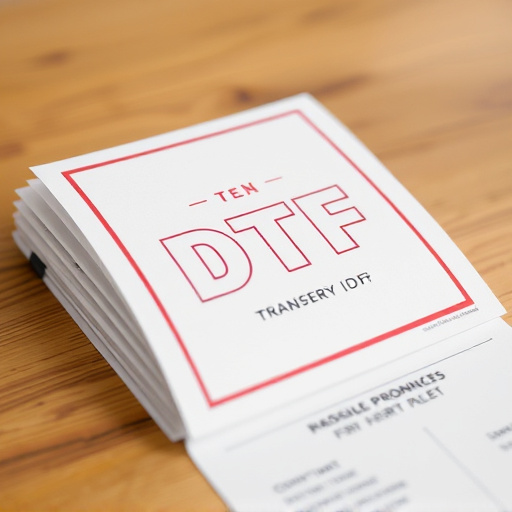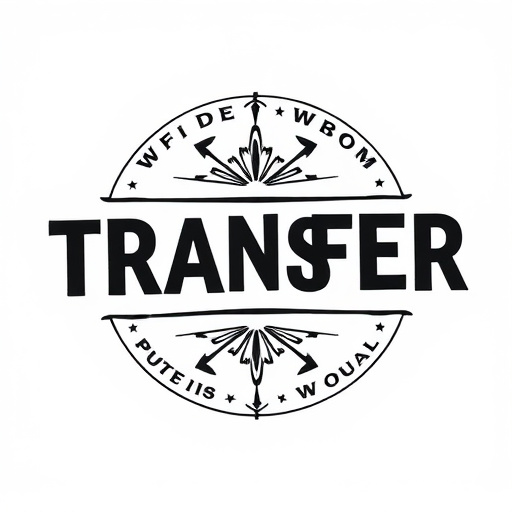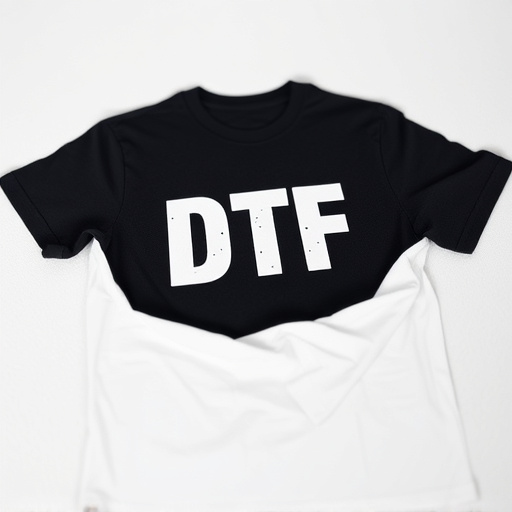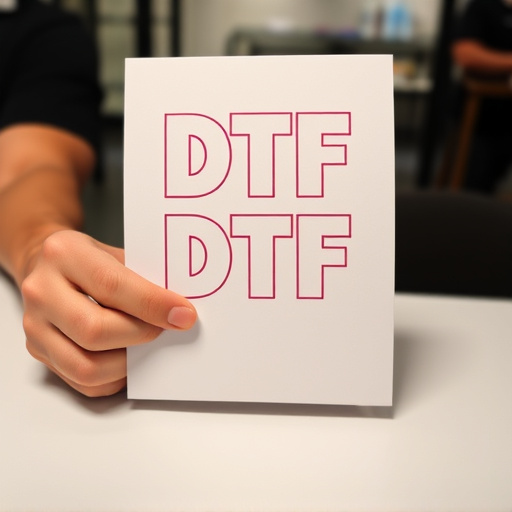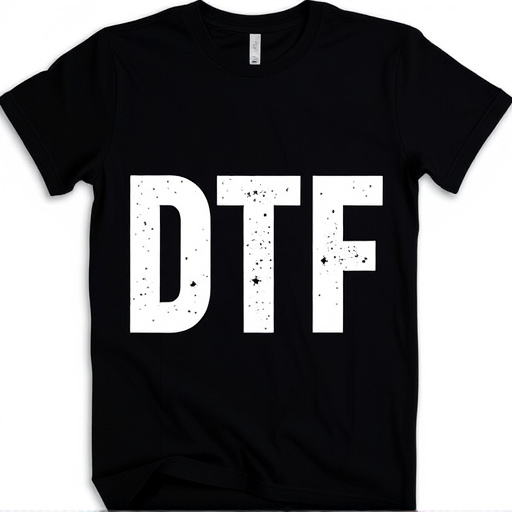Direct-to-film (DTF) technologies democratize intricate design creation for hobbyists and artisans. By applying ink to transparent film and transferring it to diverse surfaces, users can produce complex designs with minimal equipment. Optimizing for materials, ensuring even coating, and practicing settings are crucial for successful DTF transfers. DTF enables cost-effective small batches, high-quality prints, and endless creative possibilities, from fabric personalization to unique crafts. Artisans can sell their DTF creations globally via online marketplaces or dedicated craft communities.
Direct-to-film (DTF) transfer printing offers a captivating world of possibilities for hobbyists and artisans looking to elevate their creations. This accessible technique allows you to apply intricate designs directly onto various surfaces, from ceramics to wood, without the need for complex equipment or expertise. In this comprehensive guide, we’ll explore the benefits of DTF for DIY enthusiasts, navigate choosing the right materials, and provide a step-by-step process to get you started. Unlock your artistic potential with DTF transfers and dive into a realm of creative expression.
- Understanding Direct-to-Film (DTF) Transfer: A Beginner's Guide
- Benefits of DTF for Hobbyists and Artisans
- Choosing the Right DTF Printing Materials
- Step-by-Step Process: Creating Your First DTF Print
- Creative Applications of DTF Transfers in Crafting
- Where to Buy and Sell Your Custom DTF Prints
Understanding Direct-to-Film (DTF) Transfer: A Beginner's Guide

Direct-to-film (DTF) transfer is a revolutionary process that allows hobbyists and artisans to bring their creative designs to life on various surfaces, from textiles to ceramics. Unlike traditional printing methods that require specialized equipment and facilities, DTF offers a user-friendly alternative, making it accessible for beginners. The process involves applying a special ink directly onto a film, which is then transferred onto the desired substrate using heat and pressure. This method produces high-quality, long-lasting prints with vibrant colors and intricate details.
For those new to DTF transfer, understanding the basics is key. It starts with designing or sourcing an image that can be adapted for printing. The design is then optimized for the specific material it will be applied to. Once ready, the DTF ink is precisely deposited onto a transparent film, ensuring even coating. This film acts as a carrier, allowing for easy application and removal. After curing, the film is carefully positioned on the target surface, and heat and pressure are applied to fuse the ink permanently, creating stunning DTF prints.
Benefits of DTF for Hobbyists and Artisans
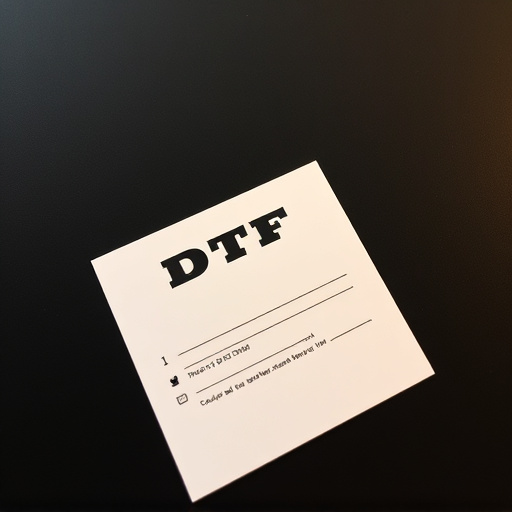
Direct-to-film (DTF) options offer a myriad of benefits for hobbyists and artisans, revolutionizing their creative processes and opening up new possibilities. One of the key advantages is its accessibility; DTF Transfer allows individuals with varying skill levels to effortlessly create intricate designs on various materials like fabric, wood, or metal. This technology enables them to bring their artistic visions to life with ease, from personalized gifts to unique home decor pieces.
Moreover, DTF Printing provides a cost-effective solution for small-batch production. Artisans can quickly produce multiple, high-quality prints without the need for complex machinery or specialized equipment. This efficiency streamlines their workflow, allowing them to focus more on creativity and less on logistical hurdles. In essence, DTF offers hobbyists and artisans a versatile, efficient, and affordable way to transform their ideas into tangible, marketable products.
Choosing the Right DTF Printing Materials
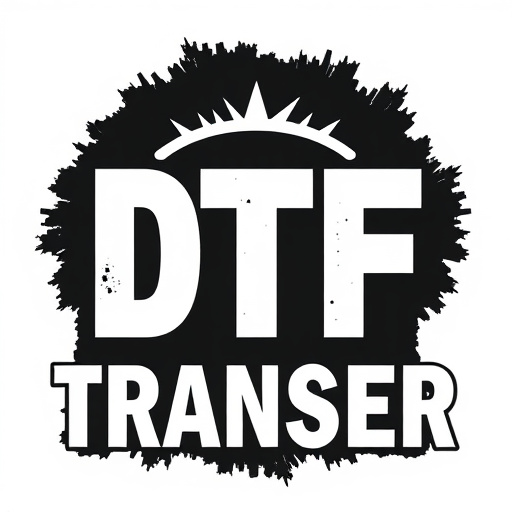
When exploring direct-to-film (DTF) printing for hobbyists and artisans, selecting the appropriate materials is a pivotal step in achieving exceptional results. The key lies in understanding the compatibility between your chosen DTF transfer medium and the surface you intend to print upon. Whether it’s fabric, wood, metal, or ceramics, each substrate has its own unique properties that influence the final output. For instance, DTF transfers designed for dark surfaces like black t-shirts offer contrasting, vibrant prints, while those suitable for lighter materials ensure precision and detail.
Artisans should consider the durability of both the transfer film and the print itself, especially for items meant to withstand exposure or frequent handling. High-quality DTF printing materials often boast longevity, ensuring that intricate designs and personalized touches remain intact over time. This consideration is vital for crafting memorable, long-lasting gifts or creating unique items for personal use, guaranteeing that each DTF print stands the test of time.
Step-by-Step Process: Creating Your First DTF Print
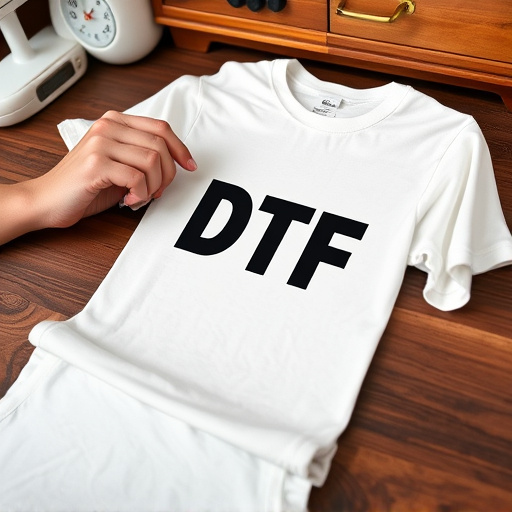
Creating your first Direct-to-Film (DTF) print is a rewarding process that opens up a world of creative possibilities for hobbyists and artisans. Here’s a step-by-step guide to help you get started. First, prepare your design: choose a high-resolution image or artwork that you want to transfer. Ensure it’s in the correct format (typically JPEG or PNG) and has enough detail for a crisp print. Next, select your DTF transfer film—available in various materials like vinyl, flexi, or heat-transfer paper—suitable for your project medium.
Load the film into your printer according to the manufacturer’s instructions. Ensure proper alignment and feed the film carefully to avoid jamming. Once printed, carefully cut out the design from the film, leaving a small border around it for easier handling. Place the film face-down on your chosen substrate—a canvas, t-shirt, mug, or any other material compatible with DTF printing—and use a hot press or iron to apply heat and pressure, fusing the ink into the surface. After cooling down, inspect your print for quality. Adjusting settings and practicing on scrap materials will help you achieve flawless results in no time.
Creative Applications of DTF Transfers in Crafting
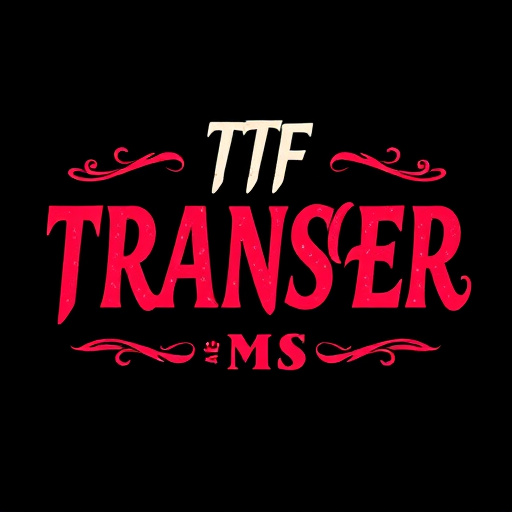
Direct-to-film (DTF) transfers offer a myriad of creative applications for hobbyists and artisans, expanding the possibilities of their crafting projects. These innovative printing techniques allow users to apply intricate designs and patterns directly onto various surfaces, such as wood, fabric, ceramics, and metal, with ease. With DTF transfers, crafting enthusiasts can transform ordinary items into extraordinary works of art.
For instance, DTF prints can be used to create personalized home decor pieces, like wooden signs or candle holders, adorned with unique designs and quotes. Artisans can also incorporate DTF technology into their jewelry-making process, embossing intricate patterns onto metal charms or creating custom pendant designs. Furthermore, DTF transfers excel in fabric printing, enabling crafters to add unique motifs to clothing, upholstery, or even curtain fabrics, making each piece one-of-a-kind.
Where to Buy and Sell Your Custom DTF Prints

When it comes to buying and selling custom DTF (Direct-to-Film) prints, artisans have several avenues to explore. Online marketplaces like Etsy and eBay are popular choices, offering a global platform to reach customers. These sites cater to a diverse range of buyers, from individuals seeking unique gifts to businesses looking for promotional items. Artisans can showcase their creations, including intricate DTF transfers, and connect with clients instantly.
Additionally, dedicated craft supply platforms and social media groups provide specific spaces for DTF enthusiasts. Specialized websites often offer not just a marketplace but also valuable resources and tutorials for beginners. Social media platforms like Instagram and Facebook host vibrant communities where artisans can share their work, gain exposure, and even collaborate on projects. This direct connection with fellow creators fosters a supportive environment, enhancing the overall DTF printing experience.







